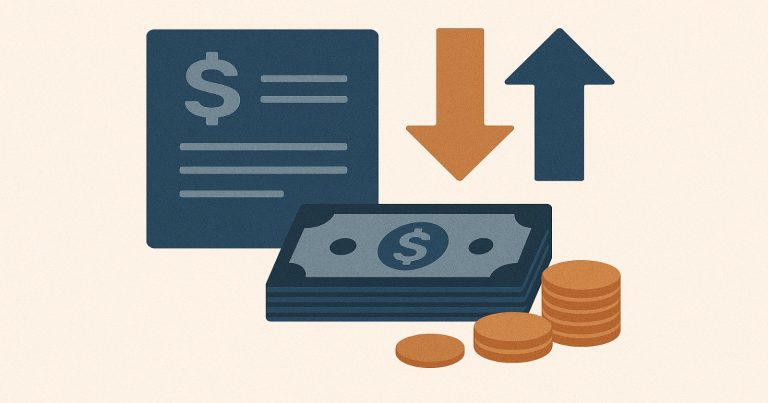The cash flow statement is a very crucial component of financial reporting. It provides all the details regarding cash inflow and outflow during any specific time by the company. From a small-sized organization to a big corporation, a cash flow statement determines whether a company would be able to generate cash or not to fund its operations, repay the debt, or make investments toward growth. There are two main ways by which companies go about calculating cash flow, and the nature of the cash flow statement comprises an operating section, an investing section, and a financing section, and such sections provide a comprehensive overview of the company’s financial position.
What is a Cash Flow Statement?
A cash flow statement is a financial statement that depicts the inflow and outflow of cash of a company resulting from the activities associated with operating, investing, and financing a company over a specific period. This is basically for showing how a business handles its cash position and the capacity of the company to earn cash from various sources to meet its obligations.
Key Characteristics:
- Represents Liquidity: It indicates the ability of the company to liquidate its short-term obligations.
- Cash Flows Vary: It categorizes cash flows according to their source; either from operations, investing, or financing.
- Tracks Cash Efficiency: It explains the way a business manages its cash and for what purpose it is using it to sponsor operations and future growth
How the Cash Flow Statement Is Used
A cash flow statement is used by various stakeholders to analyze the company’s cash management and financial flexibility. It informs one about:
- Liquidity Analysis: How well the company would be to meet its short-term liabilities
- Ergonomics: If the company can generate sufficient cash for its core business operations
- Investment Decisions: Whether the investor or the manager should invest or dis-invest.
- Debt servicing: Help creditors decide whether the business can service its debts.
Cash Flow Statement Format
The cash flow statement is divided into three major parts:
- Operating Activities: This part shows cash inflows and outflows coming from the business operations center. It typically includes:
- Receipts from customers.
- Payments to suppliers and employees.
- Interest paid and received.
- Taxes paid.
2. Investment activities: The activities and cash flow generated in this section arise from the acquisition as well as disposal of long-term assets. It normally includes the following:
- Purchase of property, equipment, or other capital assets.
- Sale of assets or investments
- Acquisition of other businesses
3. Financing activities: In this section, the cash transactions arising from raising funds or returning them to the investors are recorded. It will mostly encompass:
- Share or bond issuance.
- Repayment of loan as well as dividends paid to shareholders.
Methods of Calculating Cash Flow
There are two methods applied in determining cash flow from operations on the cash flow statement. These include the direct method and the indirect method. Each of these methods provides a different approach to reporting cash movements but still ultimately reaches the net cash flow from operations.
Direct Method of Calculating Cash Flow
The direct approach refers to the direct reporting of major cash receipts and major cash payments that occurred during the accounting period. This involves specificity in reporting inflows in the form of cash collected from customers, for example, and outflows in terms of cash paid to suppliers, employees, or interest paid. This merely reflects a clear and detailed account of cash transactions without considering non-cash items.
Steps of the Direct Method
- Cash Receipts:
- Cash from customers: This is the amount of cash a business earns in terms of its sales over any given period.
- Interest and dividends received: Amounts of interest or dividends received by the business on its investments.
2. Cash Payments:
- Cash paid to suppliers: Cash outlays of a firm in purchasing goods or services.
- Cash paid for salaries and wages: All cash expenditures pertaining to the employee’s remuneration, wages, and other fringe benefits.
- Interest paid: All cash paid as interest on borrowed funds.
- Taxes paid: Total of all cash paid as taxes, including income tax, sales tax, and all other levies.
3. Net Cash Flow: Net cash flow is derived by subtracting total cash paid from total cash received.
Advantages of the Direct Method
- Greater transparency: It provides a clear, itemized breakdown of cash inflows and outflows, making it easy to see the cash impact of specific activities.
- Improved cash management: Because it shows actual cash receipts and payments, managers can better understand where cash is coming from and how it is being used.
Disadvantages of the Direct Method
- Time-consuming: It requires detailed records of all cash transactions, which may not be readily available in many businesses.
- Less commonly used: Despite its clarity, this method is not as widely adopted because it demands more effort to collect data on individual cash transactions.
Indirect Method of Calculating Cash Flow
The indirect method starts with net income from the income statement and adjusts for noncash items such as depreciation and changes in working capital in order to reach net cash flow from operating activities. It is easier for most entities because it only requires information readily available in the company’s financial statements.
Steps Involved in Indirect Method
- Start with Net Income: Begin with the company’s net income from the income statement, as this is a starting point for calculating cash flow.
- Adjust for Non-Cash Items: Add back non-cash expenses such as depreciation and amortization since these reduce net income but do not involve cash outflows.
- Adjust for Changes in Working Capital:
- Accounts Receivable: If accounts receivable have increased, subtract the increase, as this means cash that was earned hasn’t been received yet.
- Inventory: If inventory levels have risen, subtract the increase, as this indicates more cash was spent to purchase goods.
- Accounts Payable: If accounts payable have increased, add the increase, as this means the company has delayed paying its bills, thus conserving cash.
- Net Cash Flow: After making these adjustments, you arrive at the net cash flow from operating activities.
Advantages of the Indirect Method
- Simplified Process: Because it begins with net income, which is a pre-calculated amount, it requires only additional adjustments concerning non-cash items and change in working capital.
- Widely used: Virtually all firms use this model since it conforms with the pattern that is adopted by other financial statements, like the income statement and balance sheet.
Drawbacks of the Indirect Method
- Less transparent: that is to say, it does not report and reflect cash transactions by individual account, therefore cash inflow and outflow can be hard to identify in particular.
- Can be more challenging to interpret: Since the approach starts off with net income, direct relationship between operating cash flow and business operations can sometimes be a little more challenging to make.
Limitations of the Cash Flow Statement
While the cash flow statement is an essential financial tool, it has several limitations:
- Non-cash transactions are excluded: Transactions that do not involve cash, such as depreciation or accruals, are not reflected, which can distort the actual performance of the business.
- Does not provide a complete picture: The cash flow statement does not provide information about the profitability or the financial health of the company. It must be used alongside other statements like the income statement and balance sheet.
- Timing of cash flows: A significant limitation is that it does not reflect future cash flows or commitments, making it less effective for long-term planning.
Cash Flow Statement vs. Income Statement vs. Balance Sheet
Understanding the differences between the cash flow statement, income statement, and balance sheet is crucial for a comprehensive financial analysis:
- Cash Flow Statement: It talks about just cash flow transactions and liquidity of the firm.
- Income Statement: It will speak of the profitability of the firm over a given period by showing revenue and expenses.
- Balance Sheet: This shall give a snapshot of the financial position of the firm at a particular point in time that involves assets, liabilities, and equity.
| Statement | Purpose | Key Information |
|---|---|---|
| Cash Flow Statement | Tracks cash inflows and outflows | Cash from operations, investments |
| Income Statement | Shows profit or loss over time | Revenues, expenses, net income |
| Balance Sheet | Snapshot of financial health | Assets, liabilities, equity |
Cash Flow Statement Format FAQs
What is the purpose of a cash flow statement format?
A cash flow statement format helps track the cash inflows and outflows of a business to ensure it has enough cash to meet obligations.
How does a cash flow statement differ from a balance sheet?
A cash flow statement focuses on liquidity, while a balance sheet provides a snapshot of a company’s financial position, including assets and liabilities.
Why is cash flow important for a business?
Cash flow is crucial for meeting short-term obligations, investing in growth, and ensuring the overall financial stability of a business.
How can a cash flow statement help investors?
Investors use cash flow statements to assess a company’s ability to generate cash from operations and sustain profitability.


